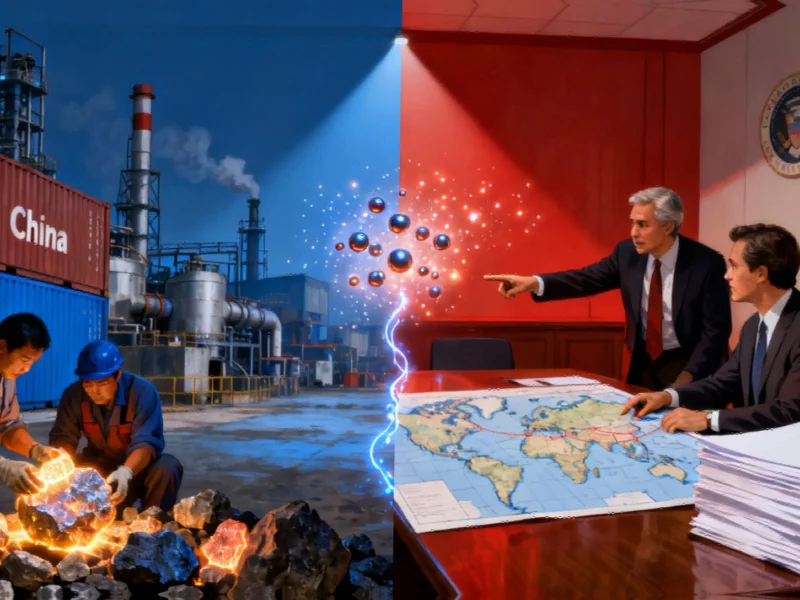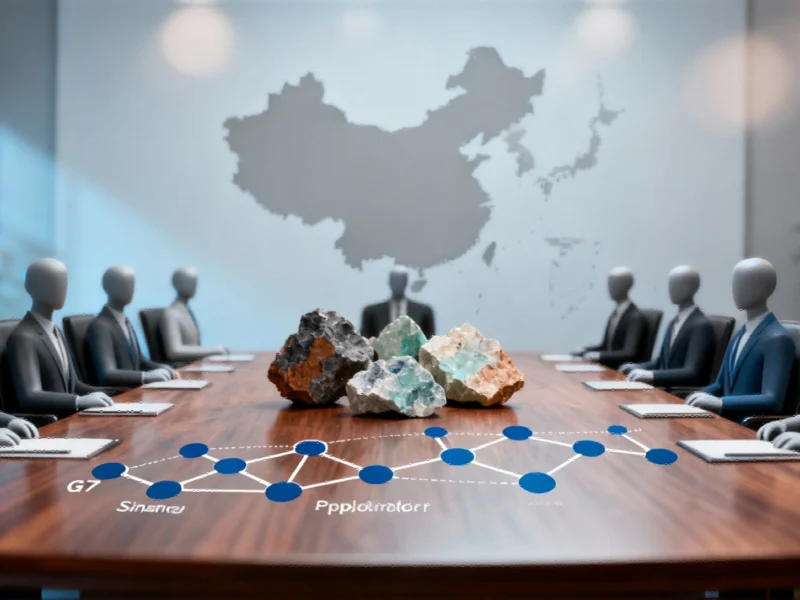In a calculated move that has sent shockwaves through international markets, China has fundamentally altered the landscape of the global technology and manufacturing sectors. The recent implementation of sweeping export controls on rare earth minerals represents more than just trade policy adjustment—it signifies Beijing’s strategic positioning in the ongoing economic confrontation with Western nations.
The Regulatory Shift That Changed Everything
China’s Ministry of Commerce quietly unleashed what industry analysts are calling a “game-changing” regulatory framework through Announcement No. 62 of 2025. This comprehensive document establishes unprecedented oversight requirements for rare earth exports, mandating that foreign entities secure Chinese government approval for any products containing even minimal quantities of these critical minerals. The regulations further compel companies to disclose detailed information about intended usage, creating a transparency mechanism that gives Beijing unprecedented visibility into global supply chains.
The timing of this announcement appears strategically significant, coming just weeks before anticipated high-level talks between Chinese and American leadership. As noted by international business expert Naoise McDonagh of Australia’s Edith Cowan University, “The timing has really upset the kind of timeline for negotiations that the Americans wanted,” highlighting how Beijing has seized the initiative in trade discussions.
Rare Earths: The Silent Engine of Modern Technology
China’s dominance in rare earth processing gives the nation extraordinary leverage in global markets. These seventeen metallic elements serve as the foundation for countless advanced technologies, from consumer electronics to military hardware. The new restrictions directly impact manufacturing across multiple sectors, including the latest generation of computing devices featuring advanced chipsets and sophisticated gaming systems requiring specialized components.
The strategic importance of these minerals cannot be overstated. Modern defense systems, renewable energy technologies, and telecommunications infrastructure all depend on reliable access to processed rare earths. China currently controls approximately 90% of global refining capacity, creating what many analysts describe as a critical vulnerability in Western industrial bases.
Global Reactions and Escalating Tensions
The international response has been immediate and forceful. President Trump threatened to impose 100% tariffs on Chinese goods while considering countermeasures involving export controls on essential software systems. U.S. Treasury Secretary Scott Bessent characterized the situation in stark terms, stating, “This is China versus the world. They have pointed a bazooka at the supply chains and the industrial base of the entire free world.”
Beijing has responded with measured rhetoric, with Commerce Ministry officials emphasizing that “provided the export licence applications are compliant and intended for civilian use, they will be approved.” However, the additional layer of bureaucratic oversight introduces significant uncertainty for manufacturers worldwide, particularly those developing next-generation AI-powered software platforms and advanced computing interfaces.
Broader Implications for Global Supply Chains
The ripple effects extend far beyond direct manufacturing concerns. Recent developments in regional technology initiatives and digital inclusion programs face potential disruption due to component availability issues. Similarly, the entertainment technology sector, including major projects like the highly anticipated gaming releases requiring specialized hardware, must now navigate this new regulatory environment.
The situation has further escalated with reciprocal port fee impositions between Chinese and American vessels, signaling a broadening of the trade conflict beyond traditional tariff battles. These measures effectively terminate the fragile truce established in May, returning both economic superpowers to a state of heightened commercial tension.
Strategic Calculations and Future Scenarios
Industry observers note that China’s move represents a sophisticated understanding of global economic interdependencies. By targeting rare earths, Beijing has identified a pressure point where Western alternatives remain limited and development timelines extended. The requirement for usage declarations provides Chinese authorities with valuable intelligence about technological development trajectories abroad.
As the world watches the upcoming meeting between President Trump and President Xi Jinping, the rare earth restrictions have fundamentally altered the negotiating dynamics. China has demonstrated its willingness to deploy its mineral dominance as an economic weapon, while the United States faces the challenge of responding without triggering broader supply chain disruptions that could affect multiple industries simultaneously.
The coming weeks will prove critical in determining whether both nations can find common ground or if the global economy faces a new phase of technological decoupling, with rare earth access serving as the primary battleground in this high-stakes economic confrontation.
Based on reporting by {‘uri’: ‘bbc.com’, ‘dataType’: ‘news’, ‘title’: ‘BBC’, ‘description’: “News, features and analysis from the World’s newsroom. Breaking news, follow @BBCBreaking. UK news, @BBCNews. Latest sports news @BBCSport”, ‘location’: {‘type’: ‘place’, ‘geoNamesId’: ‘2643743’, ‘label’: {‘eng’: ‘London’}, ‘population’: 7556900, ‘lat’: 51.50853, ‘long’: -0.12574, ‘country’: {‘type’: ‘country’, ‘geoNamesId’: ‘2635167’, ‘label’: {‘eng’: ‘United Kingdom’}, ‘population’: 62348447, ‘lat’: 54.75844, ‘long’: -2.69531, ‘area’: 244820, ‘continent’: ‘Europe’}}, ‘locationValidated’: False, ‘ranking’: {‘importanceRank’: 8548, ‘alexaGlobalRank’: 110, ‘alexaCountryRank’: 86}}. This article aggregates information from publicly available sources. All trademarks and copyrights belong to their respective owners.



